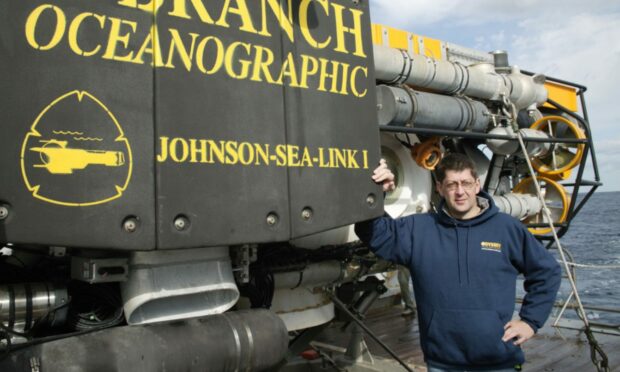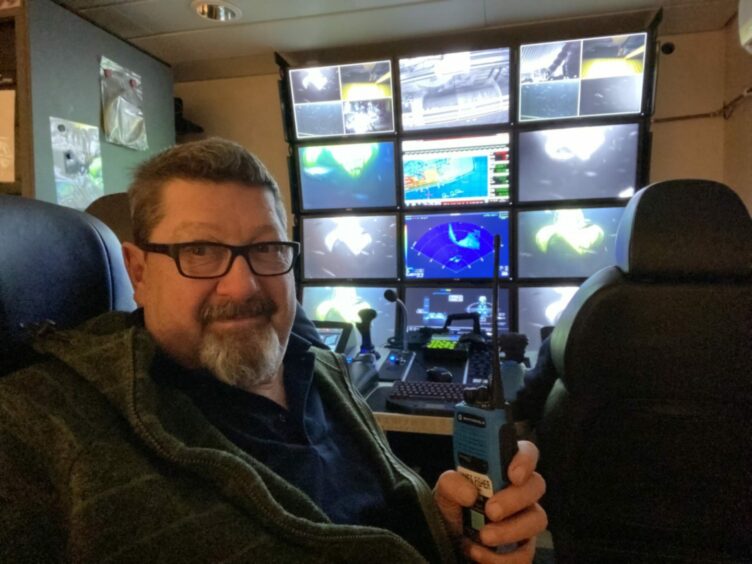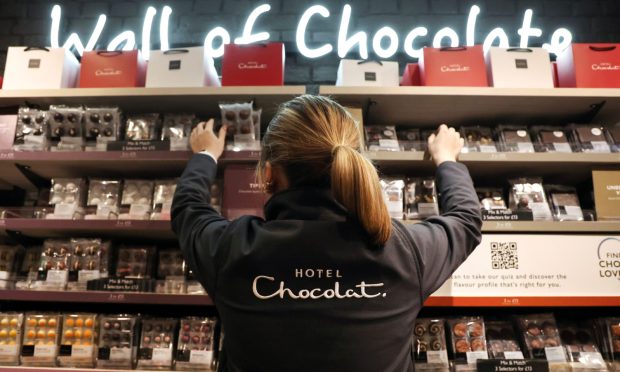A marine archaeologist from St Andrews has revealed he was warned against working for the company operating the submersible that killed five people in an implosion last month.
Neil Cunningham Dobson – who helped salvage the world’s deepest and largest precious metal recovery from the shipwrecks of the SS Gairsoppa and SS Mantola in the North Atlantic – believes Titanic tourism should be stopped.
The tourist submersible, developed by OceanGate, was diving to the wreck of the Titanic on June 18.
OceanGate’s CEO Stockton Rush, 61, died on board the Titan alongside the four other passengers: British-Pakistani businessman Shahzada Dawood, 48, and his son Suleman, 19, British businessman Hamish Harding, 58, and Paul-Henry Nargeolet, 77, a former French navy diver.
“Anyone who works in the industry hates to hear of the worst,” said Neil. “It’s sad and tragic, and could have been avoided.”
Neil says he inquired into opportunities at OceanGate years ago but was immediately told to stay away.
He said: “My colleague advised if I got offered to dive – and I did contact OceanGate to dive – do not go on that submersible.
“I’m self-employed so I sent an email saying I was interested in working.
“There was not much response – that was it. I went to find out more and it was not safe.
“I was warned against it.”
Against Titanic tourism
OceanGate has suspended its activities, with a note on its website explaining it had stopped “all exploration and commercial operations”.
Neil believes it is “the right thing” to prevent more people from dying in the name of Titanic tourism.
He says only scientists should have access to the wreckage.
Photographs taken by Neil’s colleagues have portrayed 3D virtual reality images of the Titanic through remotely operate vehicles and equipment.
He said: “You could zoom in on a coin and read the date.
“That’s the technology we have and that’s safe. A hi-res 3D map could cost x amount and the bog standard Woolworth version could cost x amount.
“It’s a far safer way to learn more than on any submersible.
“There’s no need to do a manned submersible dive when a ROV can provide more information, is safer, and can stay down there for days.
“If things go wrong, it can be recovered. Nobody is killed.”
Having been on two submersibles, Neil knows first-hand that parts could have blown away from the wreckage.
He also sounded warnings over poor visibility and navigation issues, describing the sea as “dark, cold and uninviting”.
Time is running out when it comes to scientific exploration of the Titanic, with no more than half a century left due to microbes eating away at the steel.
Neil added: “There was a lot of life on there.
“The only reason the Titanic is famous is because rich people were on it.
“If it were immigrants on that ship, there would not be the same fascination or the idea to go and view or remove items.”
A dream sold to wealthy people
Having spent 50 years at sea, Neil is an expert in the risks and the importance of mitigating them, especially with untrained members of the public.
He believes OceanGate sold a dream to wealthy people and that people working for the company must take responsibility.
Neil hopes the accident report will clarify the fake news which is circulating online.
“Stockton [Rush] shouldn’t have played with other people’s lives,” said Neil. “How I look at it is, it was an accident waiting to happen.
“People should have spoken out sooner if it wasn’t safe.
“When working offshore, father and son are not allowed to work together.
“That’s because if the worst happens, two generations are wiped out.
“I just feel sorry for them. They thought it would never happen.
“This was not if but when. I hate to hear people lost their lives looking at shipwrecks.
“I hope we all learn from it.”














